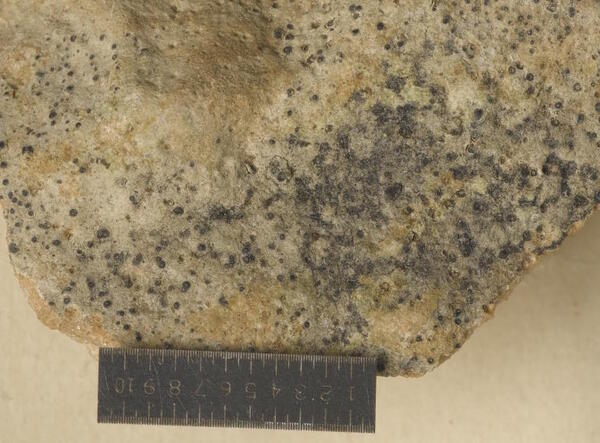Verrucaria dolomitica (A. Massal.) Kremp.
Denkschr. kgl. bayer. bot. Ges., Abt. 2, 4: 238, 1861. Basionym: Amphoridium dolomiticum A. Massal. - Symmicta Lich.: 80, 1855.
Synonyms:
Distribution: N - VG, Ven (Lazzarin 2000b), Lomb (Gheza & al. 2023), Emil (Fariselli & al. 2020). C - Tosc, Abr. S - Pugl (Jatta 1909-1911).
Description: Thallus crustose, endosubstratic, whitish-grey, not delimited by a black line. Perithecia black, 0.15-0.38 mm, fully or ¾-immersed in the rock, leaving deep pits in the rock when they fall off. Involucrellum apical, c. 50-90 µm thick, adpressed to exciple; exciple globose, c. 0.22-0.26 mm across, the wall pale to dark brown; hamathecium of branched periphyses and periphysoids measuring 30-50 x 1.5-2.5 µm, interascal filaments absent; hymenial gel hemiamyloid, I+ red (I+ blue at very low concentrations of I), K/I+ blue. Asci 8-spored, subcylindrical to oblong-clavate, I-, fissitunicate, the wall thickened above, c. 88-95 x 26-28 µm, Verrucaria-type. Ascospores 1-celled, hyaline, ellipsoid, (23.6-)24-28(-30.2) x (10-)10.4-12.5(-13.7) µm. Photobiont chlorococcoid. Spot tests: K-, C-, KC-, P-, UV-. Chemistry: without lichen substances.
Note: on calcareous rocks and pebbles, usually near the ground. A species belonging to the poorly understood complex of V. hochstetteri, also reported from several localities in the Austrian and French Alps, differing from V. foveolata in the small apical involucrellum.
Growth form: Crustose
Substrata: rocks
Photobiont: green algae other than Trentepohlia
Reproductive strategy: mainly sexual
Poorly known taxon in need of further study
Commonnes-rarity: (info)
Alpine belt: rare
Subalpine belt: rather rare
Oromediterranean belt: extremely rare
Montane belt: rather rare
Submediterranean belt: extremely rare
Padanian area: absent
Humid submediterranean belt: extremely rare
Humid mediterranean belt: absent
Dry mediterranean belt: absent

Predictive model
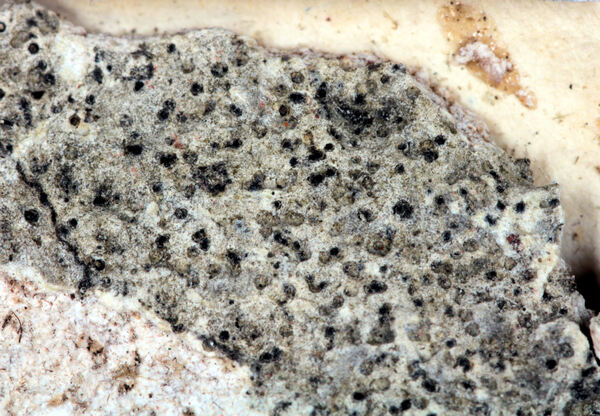
Photo by Maria Zardini, Museo di Storia Naturale di Venezia CC BY-SA 4.0 d rupes circa Rubbio et Asiago Septem Communium. Trevisan Lichenotheca Veneta 185
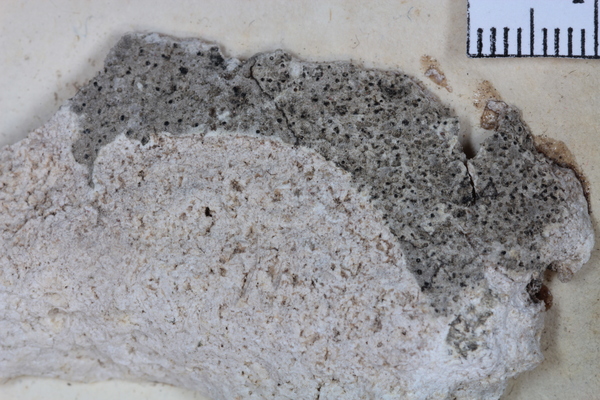
Photo by Maria Zardini, Museo di Storia Naturale di Venezia CC BY-SA 4.0
d rupes circa Rubbio et Asiago Septem Communium.
Trevisan Lichenotheca Veneta 185
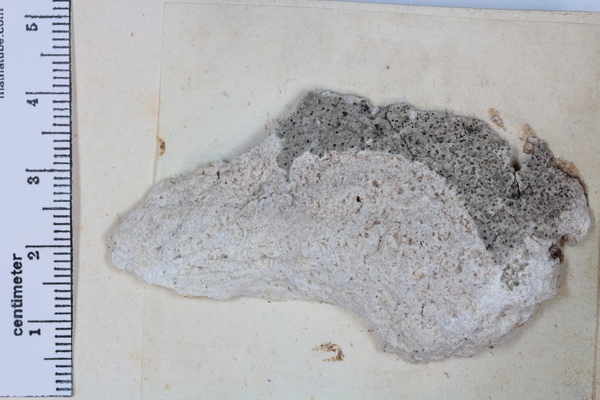
Photo by Maria Zardini, Museo di Storia Naturale di Venezia CC BY-SA 4.0
d rupes circa Rubbio et Asiago Septem Communium.
Trevisan Lichenotheca Veneta 185
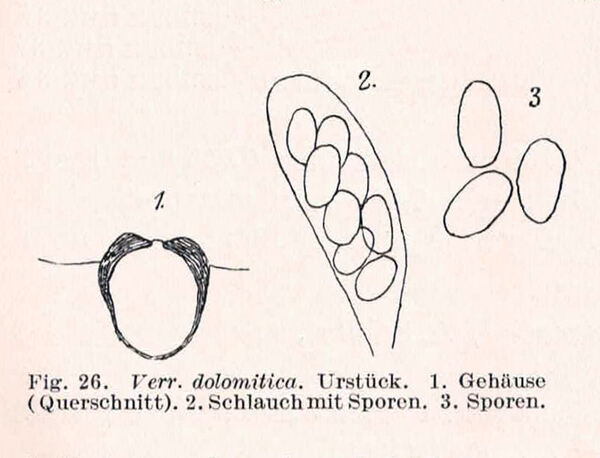
Zschacke, H. (1934) Epigloeaceae, Verrucariaceae und Dermatocarpaceae. In: Dr. L. Rabenhorst‘s Kryptogamen-Flora, Band 9, Abt. 1, Teil 1. Akademische Verlagsgesellschaft, Leipzig, 695 pp. - Public Domain
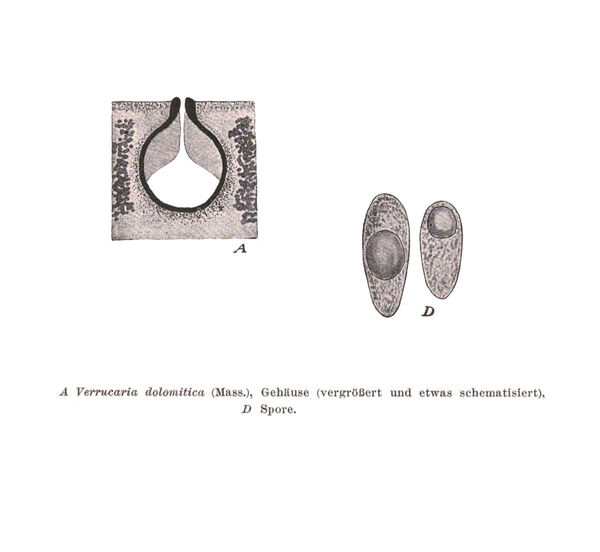
Zahlbruckner A. 1926. Lichenes (Flechten). In: Engler A. (ed.): Die natürlichen Pflanzenfamilien. 2nd ed., vol 8, W. Engelmann, Leipzig, 270 pp.
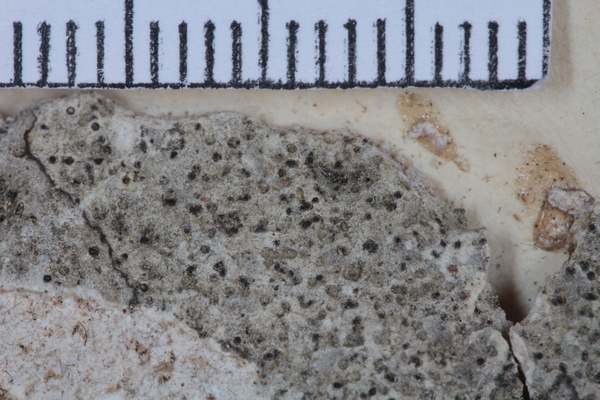
Photo by Maria Zardini, Museo di Storia Naturale di Venezia CC BY-SA 4.0
d rupes circa Rubbio et Asiago Septem Communium.
Trevisan Lichenotheca Veneta 185
Growth form: Crustose
Substrata: rocks
Photobiont: green algae other than Trentepohlia
Reproductive strategy: mainly sexual
Poorly known taxon in need of further study
Commonnes-rarity: (info)
Alpine belt: rare
Subalpine belt: rather rare
Oromediterranean belt: extremely rare
Montane belt: rather rare
Submediterranean belt: extremely rare
Padanian area: absent
Humid submediterranean belt: extremely rare
Humid mediterranean belt: absent
Dry mediterranean belt: absent

Predictive model

Photo by Maria Zardini, Museo di Storia Naturale di Venezia CC BY-SA 4.0 d rupes circa Rubbio et Asiago Septem Communium. Trevisan Lichenotheca Veneta 185

Photo by Maria Zardini, Museo di Storia Naturale di Venezia CC BY-SA 4.0
d rupes circa Rubbio et Asiago Septem Communium.
Trevisan Lichenotheca Veneta 185

Photo by Maria Zardini, Museo di Storia Naturale di Venezia CC BY-SA 4.0
d rupes circa Rubbio et Asiago Septem Communium.
Trevisan Lichenotheca Veneta 185

Zschacke, H. (1934) Epigloeaceae, Verrucariaceae und Dermatocarpaceae. In: Dr. L. Rabenhorst‘s Kryptogamen-Flora, Band 9, Abt. 1, Teil 1. Akademische Verlagsgesellschaft, Leipzig, 695 pp. - Public Domain

Zahlbruckner A. 1926. Lichenes (Flechten). In: Engler A. (ed.): Die natürlichen Pflanzenfamilien. 2nd ed., vol 8, W. Engelmann, Leipzig, 270 pp.

 INDEX FUNGORUM
INDEX FUNGORUM
 GBIF
GBIF
 DOLICHENS
DOLICHENS
